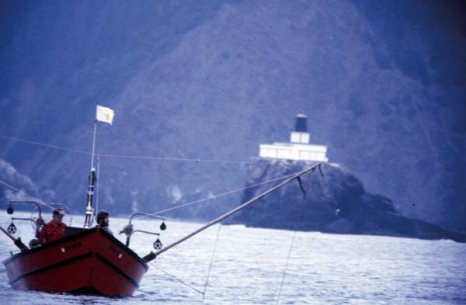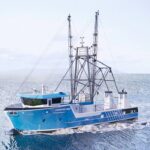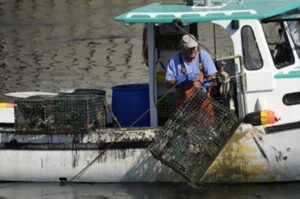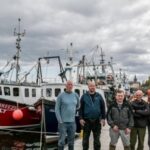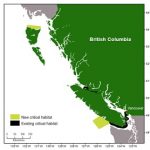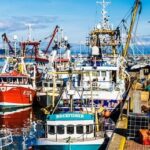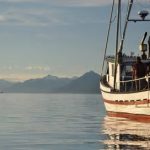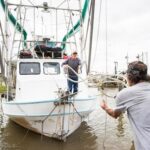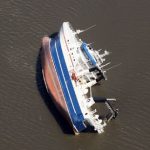Category Archives: Pacific
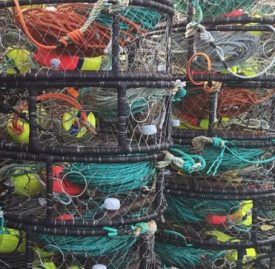
Oregon considers new rules for crab
As closures related to harmful marine toxins continue to plague Oregon’s lucrative commercial Dungeness crab fishery, new rules are under consideration that will help state fishery managers trace crab after it is caught and respond with more flexibility. In April, the Oregon Fish and Wildlife Commission will consider making permanent several rules introduced this crab season. A related bill is working its way through the Legislature. >click to read< 11:25
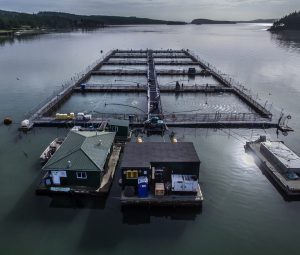
Puget Sound region’s Atlantic salmon fish farms could be headed for final harvest
The salmon-farming industry in the United States got its start right here in the Puget Sound region in the 1970s with experiments to raise salmon perfectly pan-sized or just right to fit the slot of a TV dinner. Union Carbide, then Campbell’s Soup, and a string of other entrepreneurs eventually decided docile, domesticated Atlantic salmon fattened up fastest and best in the open-water net pens they were test-piloting in Puget Sound. The industry really took off when federal fisheries scientists, with more than 1 million jilted Atlantic salmon eggs intended for restocking depleted East Coast streams, instead gave them to private industry. >click to read< 10:27
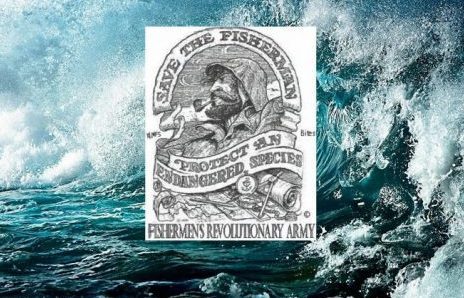
Nil’s Stolpe writes, The Magnuson-Stevens amendment I want under the Christmas tree
OVERFISHING! This has become one of the oceans branch of the doom and gloom prognisticator’s (aka Environmental Non Governmental Organizations or ENGOs) principal calls for alms. To wit, they have collectively raked in hundreds of millions of dollars from big business-supported foundations and trusting members of the public to persecute (generally commercial) fishermen who they preach are the cause of “overfishing,” the major threat to the sanctity of the oceans. (I’ll note here that the Pew “Charitable” Trusts was the multibillion dollar foundation that initiated the war on fishermen.) This purposeful misuse of the term “overfishing” has been one of the most subtle and most effective weapons in the anti-fishing activists’ arsenal. Nils Stolpe FishNetUSA >click to read< 18:00
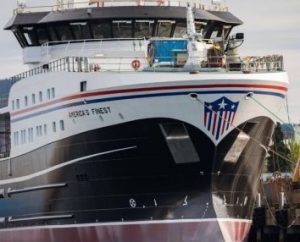
Anacortes delegation travels to Unalaska
Visitors from Anacortes, Wash., traveled to the Aleutian Islands last week to urge the Unalaska City Council to stop asking the U.S. Congress to restrict a stranded factory trawler from buying cod at sea. Earlier, Unalaska Mayor Frank Kelty sent the state’s congressional delegation a letter urging “sideboard” restrictions on any Jones Act waiver granted to the new factory trawler America’s Finest. The vessel ran afoul of federal domestic content law when it was discovered it had excess foreign steel in its hull. Now, the state-of-the-art $74 million flatfish factory trawler can’t fish in the U.S., unless Congress grants a waiver. >click to read< 12:531

28 accidents reported since crab season began off Oregon, Washington
Since the commercial Dungeness crab season began on January 15th, Coast Guard Marine Safety Unit Portland marine investigators have responded to 28 marine accidents involving commercial fishing vessels, with no reported deaths or serious injuries. Since the start of the season, Marine Safety Unit Portland personnel responded to an average of one marine accident per day, causalities included loss of propulsion, loss of steering, loss of power, fire, collisions, grounding and personnel injuries. >click to read< 17:13

Unusual catch at Usal
Last week, while pulling up crab pots north of Usal Beach, the crew of the Gloria II got a surprise when they discovered a Maine lobster hanging off the side of one of the pots. While no one was exactly sure what a Maine lobster was doing in the Pacific Ocean (Spiny lobsters range as far north as Monterey, but look quite different from their East Coast cousins), they have been caught very occasionally along the North Coast in the past. >click to read< 14:16
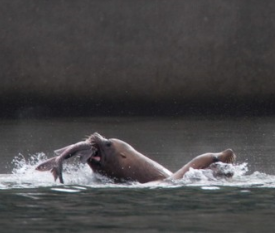
New sea lion wrinkle in the Willamette River threatens sturgeon
Oregon biologists attempting to save the Willamette River’s sharply declined winter steelhead run are facing a new twist in their vexing battle against fish-hungry sea lions at Willamette Falls. The river has seen an unusual influx this winter of large, sturgeon-eating Steller sea lions. Anglers from the falls to the Portland harbor report watching the carnage. “Sturgeon are on our radar,” said Shaun Clements of the Oregon Department of Fish and Wildlife. “We have seen up to 10 Steller sea lions at the falls, which is more than typical.” >click to read<18:24

What Does the Jones Act Mean for Offshore Wind?
The Block Island Wind Farm, a 30-megawatt wind farm located just off the coast of Rhode Island, began operations in December 2016, fulfilling the goal of the project’s developer, Deepwater Wind LLC, to build America’s first offshore wind farm. The Block Island Wind Farm consists of only five wind turbines and is tiny in comparison to the large offshore wind farms operating off the coasts of Europe, but Deepwater Wind is planning larger wind farms off the coasts of New York, Massachusetts, Rhode Island, Maryland and New Jersey. Other developers are doing the same with other projects up and down the East Coast of the United States. >click to read< 14:37

Slow crawl for crab: Seasonal delays stifle coastal economy
Price strikes, delays and poor weather have plagued the 2017-18 Dungeness crab season from the start. Roughly four weeks into the season, landings for the non-tribal coastal crab fishery in Washington were 5,574,792 pounds, only about 60 percent of the total catch during the first weeks of 2016-17 season. “It’s clear this season we are behind,” Dan Ayres, coastal shellfish manager with the Washington Department of Fish and Wildlife, said upon seeing the first official numbers of the season on Friday, Feb 16. >click to read<12:35

Alaska, West Coast to receive fishery disaster recovery funds, unclear when
The president signed a bill this month that directs recovery funds to fisheries disasters on the West Coast, including in Alaska, but it’s still unclear how the limited funds will be distributed. In a letter to the U.S. Senate in January, senators wrote that they saw a $150 million need in Alaska following the 2016 pink salmon season disaster in the Gulf. They also identified a $140 million need for the fisheries disasters in California and $117 million for those in Washington State.,, “There’s only $200 million that has been identified for all nine of these disasters,,,, >click to read<15:39
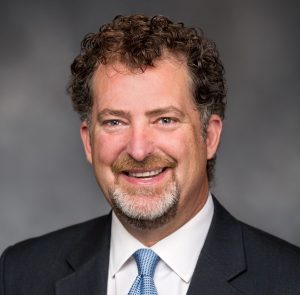
Washington senator wants B.C. to follow suit and phase out net-pen fish farms
A Washington senator says he wants to see British Columbia join the state in phasing out ocean-based Atlantic salmon farms when the province decides whether to renew farm leases in June. An American ban will be less effective in the shared ecosystem of the Salish Sea if fish farms continue to operate in Canadian waters, said Democrat Sen. Kevin Ranker. The Washington state senate and house of representatives have recently passed bills that would phase out net-pen farms when their leases come up for renewal over the next seven years. >click to read<14:06
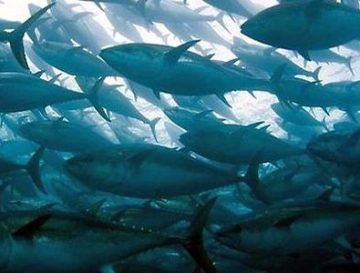
Study finds tuna fishermen who fish along ocean fronts can significantly boost revenue
These oceanographic conditions are more complex than simply being warmer temperatures, said James Watson, an OSU marine ecologist and lead author on the study. Their technical name is Lagrangian Coherent Structures, though scientists often refer to them as “the skeletons of the sea.”“Essentially they are physical ocean fronts where surface waters converge,” Watson said.,, “What we’ve found is that the stronger the convergence, the more likely it is to attract certain things, beginning with the aggregation of phytoplankton, which in turn attracts larger organisms like tuna – and, ultimately, tuna fishermen.” >click to read<12:25
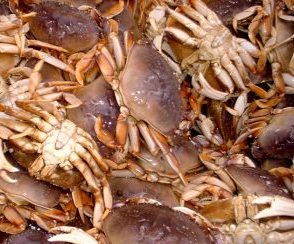
California crabbers concede 25 cents
Local commercial Dungeness crab fishermen return to their trade today but will receive 25 cents per pound less for their catch than when they started the season earlier this month. Following a meeting on Monday, crabbers in Brookings, Crescent City, Trinidad, Eureka and Fort Bragg agreed to resume fishing on Tuesday, said Rick Shepherd, president of the Del Norte Fisherman’s Marketing Association. Seafood buyers are now paying fishermen $2.50 per pound, Shepherd said. “We’re trying to hold that $2.75, but we don’t know how long we’d have to sit to do it,” he said. “There’s not much else we can do.” >click to read<11:07 
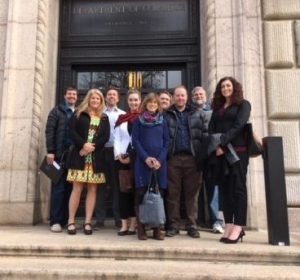
Alaska Fishing Delegation Heads To Washington
Representatives of the Alaska Longline Fishermen’s Association and the Alaska Marine Conservation Council– both members of the nationalFishing Communities Coalition (FCC) – were in Washington, DC, this week urging lawmakers to resist shortsighted efforts to weaken fishing communities by undermining key Magnuson-Stevens Act accountability provisions.,,, “The MSA is working in Alaska and around the country because all sectors adhere to scientifically-sound annual catch limits. >click to read<09:54

Oregon Senate Passes Seafood Bill – would require more frequent testing of acid levels
After recreational crabbing along the southern Oregon coast was closed last week due to domoic acid levels, the Oregon Senate has now passed a bill aimed at better pinpointing where these toxins are flourishing. The bill will now go on to the state House of Representatives for consideration. Under current conditions, whole crabbing regions have to be shut down in order to ensure safety. The bill would require more frequent testing of acid levels, so that affected areas could be more easily identified—and, ideally, these areas of closure would be much smaller in size.,,, Commercial crabbing season has been delayed due to a combination of factors. >click to read< 18:48
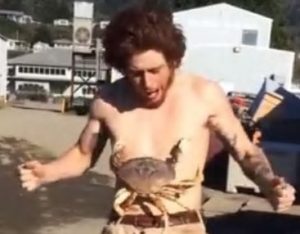
Video: The Crab Challenge is a Great Way to Lose Your Nipples
When you wish away the Tide Pod challenge, you open up the doors for something even more idiotic like this . . .Evidently, this youngster had his fill of the Tide Pod challenge, so he decides to take it up a notch and let a gigantic crab latch onto his chest. Here’s the “crab challenge”; we’ll be here with our faces buried in our hands. (Be sure to turn up the volume for best viewing.) >click to watch< (I just shake my head,,, kids today.)13:33

California: Commercial crabbing on hold
Although they’re not calling it a strike, crabbers say they will hold off on fishing until next week so plants and the boats can “get cleaned up.” Randy Smith, owner of the fishing vessel Mistasea, said seafood buyers have begun offering $2.50 per pound of crab brought in, 25 cents less than what was being offered when crabbers began fishing on Feb. 5. But, Smith, who attended a meeting of the Del Norte Fisherman’s Marketing Association on Friday, said seafood buyers have told fishermen that they won’t take any more crab until Monday or Tuesday. “It’s kind of confusing whether they don’t want us fishing until then, but they didn’t want a big glut of crabs,” >click to read< 11:48

A bad season for crab – Domoic acid levels high again, meat content poor, crustaceans start to molt
The Oregon Department of Agriculture is ordering crab fishermen to eviscerate or destroy any crab caught since Feb. 13 after tests Wednesday showed domoic acid is again at unacceptable levels. There is also a recall on all live or whole-cooked crab caught since Feb. 13, said Troy Buell, fishery manager with Oregon Department of Fish and Wildlife. Recreational crabbing in Curry County has also been closed. The news comes nine days after the long-delayed crabbing season opened in the last section on the Oregon Coast. >click to read< 09:01
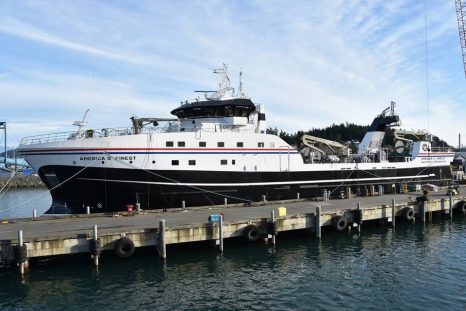
Puget Sound fishing firms tussle in Congress over new ship that ran afoul of federal law
By now, the $75 million America’s Finest should be deep into its first winter harvest season, catching and processing yellowfin sole and other fish in the Bering Sea. Instead, the 264-foot vessel — the largest trawler built in the Pacific Northwest in recent decades — is still unfinished. It sits moored at a dock at Dakota Creek Industries in Anacortes, and the shipyard has laid off more than 130 employees. Fishermen’s Finest wants the Washington and Alaska congressional delegations to back a straightforward waiver to the century-old Jones Act, which requires vessels transporting cargo and people between U.S. ports to have a hull largely made of American materials. >click to read< 13:46 
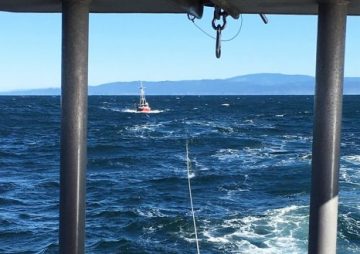
Coast Guard rescues two fishermen near Mendocino, assists two additional fishing vessels near McKinleyville and Fort Bragg
The Coast Guard rescued two fishermen aboard a 38-foot commercial fishing vessel approximately three miles west of Mendocino, Wednesday evening, and assisted two additional commercial fishing vessels near McKinleyville and Fort Bragg, Thursday. The crew aboard the 38-foot fishing vessel Seabird, contacted Coast Guard Sector Humboldt Bay watchstanders via VHF-FM channel 16 around 11:15 p.m., Wednesday, reporting a high-bilge alarm and flooding aboard the vessel. The Coast Guard aided a second fishing vessel,, The Jumpin’ Jack’s crew contacted Coast Guard Sector Humboldt Bay, The Kono’s crew contacted Station Noyo River >click to read< 21:50

California’s crab fleet awaits share of $200 million in disaster relief
The North Coast fishing fleet has welcomed some rare good news out of Washington, D.C., where the congressional budget deal reached last week included disaster relief funds intended to offset losses from the ill-fated commercial Dungeness crab season of three years ago. But just how much help may be on the way is uncertain and could remain so for some time. There’s bureaucracy involved, and the wheels of government often turn slowly for fishermen seeking aid. >click to read< 17:57
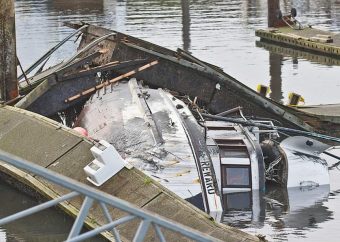
History of disaster
A report prepared by former harbormaster Richard Young provides some insight into how the Crescent City Harbor District got into such dire financial straits that a tax initiative is being proposed for the November election to help the port pay back a $5 million loan. Four natural disasters in five years, including two tsunamis, caused millions of dollars in damage to the harbor’s marina and other facilities, said Young, who was the harbormaster from 2004 to 2014. However, the port has been having financial difficulty for years due to the decline in the groundfish and salmon fisheries and the variability in the pink shrimp and Dungeness crab fisheries, he said. >click to read< 12:05
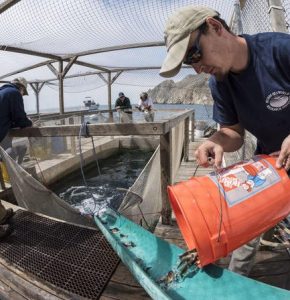
$40 Million Later, A Pioneering Plan To Boost Wild Fish Stocks Shows Little Success
Back in 1983, it seemed like a good idea. Local populations of California white seabass, a favorite among recreational and commercial fishermen, prized for its mild, tender, flaky white flesh, were declining.,, But as is often the case, things weren’t so simple. Some 35 years and nearly $40 million later, the future of the Ocean Resources Enhancement and Hatchery Program (as it’s formally called) is in jeopardy: The first formal scientific evaluation has concluded that the program had increased white seabass populations by less than 1 percent — a stunningly low success rate. >click to read< 09:52

Offshore drilling foes, denied microphone, hold rallies
With giant inflatable whales, signs that read “Drilling Is Killing” and chants of “Where’s our meeting?” opponents of President Donald Trump’s plan to open most of the nation’s coastline to oil and natural gas drilling have staged boisterous rallies before public meetings held by the federal government on the topic. That’s because the public cannot speak to the assembled attendees at the meetings. The U.S. Bureau of Ocean Energy Management is meeting one on one with interested parties and allows people to comment online, including typing comments on laptops it provides. People also can hand bureau officials written comments to be included in the record. What they can’t do is get up at a microphone and address the room. >click to read< 08:29
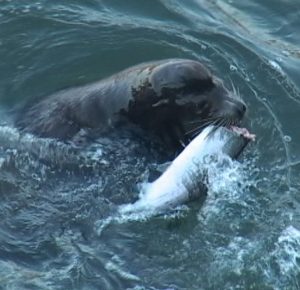
Letter: Predators prevent salmon, southern resident orca recovery
Seal and sea lion population explosions along the West Coast and particularly in our Salish Sea region have corresponded with the declines of salmon and steelhead runs. Per recent reports from the Puget Sound Institute, these mammals take six times as many Chinook as tribal, recreational and commercial fishers combined in Puget Sound alone. That doesn’t even include predation by birds, fish, whales and other animals.,, H.R. 2083 (the Endangered Salmon and Fisheries Predation Act) seeks further control of California sea lion populations in the Columbia River. >click to read< 10:24
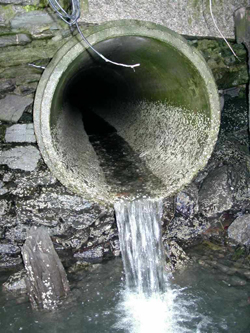
“ammonium” – San Francisco’s love affair with Dungeness crab grows more toxic
According to a new study published by researchers at San Francisco State University, wastewater pollution also makes our relationship with Dungeness crabs more toxic. Waste doesn’t disappear with a flush. In San Francisco, wastewater from homes and streets drains to treatment facilities operated by the San Francisco Public Utilities Commission. The facilities clean the water according to federal and state standards. But a form of nitrogen, called “ammonium,” remains when SFPUC releases the water into the Bay and Pacific Ocean. >click to read< 09:05
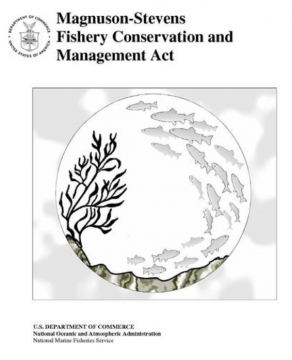
HR 200 – 24 Fishing Groups from Around the Nation Call for Magnuson-Stevens Act Reforms
Twenty-four members of Saving Seafood’s National Coalition for Fishing Communities (NCFC) are calling on Congress to enact broad reforms to the Magnuson-Stevens Act (MSA), including allowing for greater flexibility in how stocks are rebuilt and changes to how new management programs are implemented. The proposals, delivered in a letter to Alaska Senator Dan Sullivan, would, according to the signers, lead to a reauthorization that “allows for both sustainable fisheries management, and the long-term preservation of our nation’s fishing communities.” >click to read< 13:22 

D.B. Pleschner: Is court the right place to determine ‘best available science’?
A U.S. District Court judge recently ruled that the federal government’s catch limit for California’s central stock of anchovy — currently 25,000 metric tons — is far too high. But instead of weighing all the facts, the judge ignored them, shunned the established precedent of deference to federal agencies’ scientific determinations and instead endorsed the flawed arguments of the advocacy group Oceana. So what happened? >click to read< 21:55
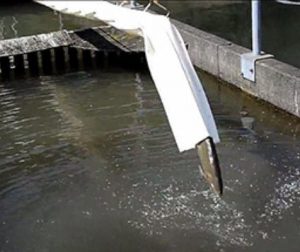
Whooshh growing rapidly in Europe, stalled by U.S. regulations
The difference between the Whooshh fish transport system and traditional fish ladders — data suggests — is like the difference between crossing the Sierra Nevada Mountain Range with the Donner Party or snug inside the club car of the California Zephyr. Yes, fish can theoretically navigate fish ladders to get around dams and other impediments, but research over the past seven years shows that it’s a perilous journey that often takes several days and leaves the lucky survivors bruised, battered and too weak to complete their upstream migration. In contrast, the Whooshh transport system literally whooshhes the fish up and over the dam in a matter of seconds via a seamless pneumatic tube system that works something like a gentle vacuum. >click to read< 10:02 






